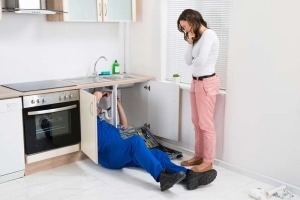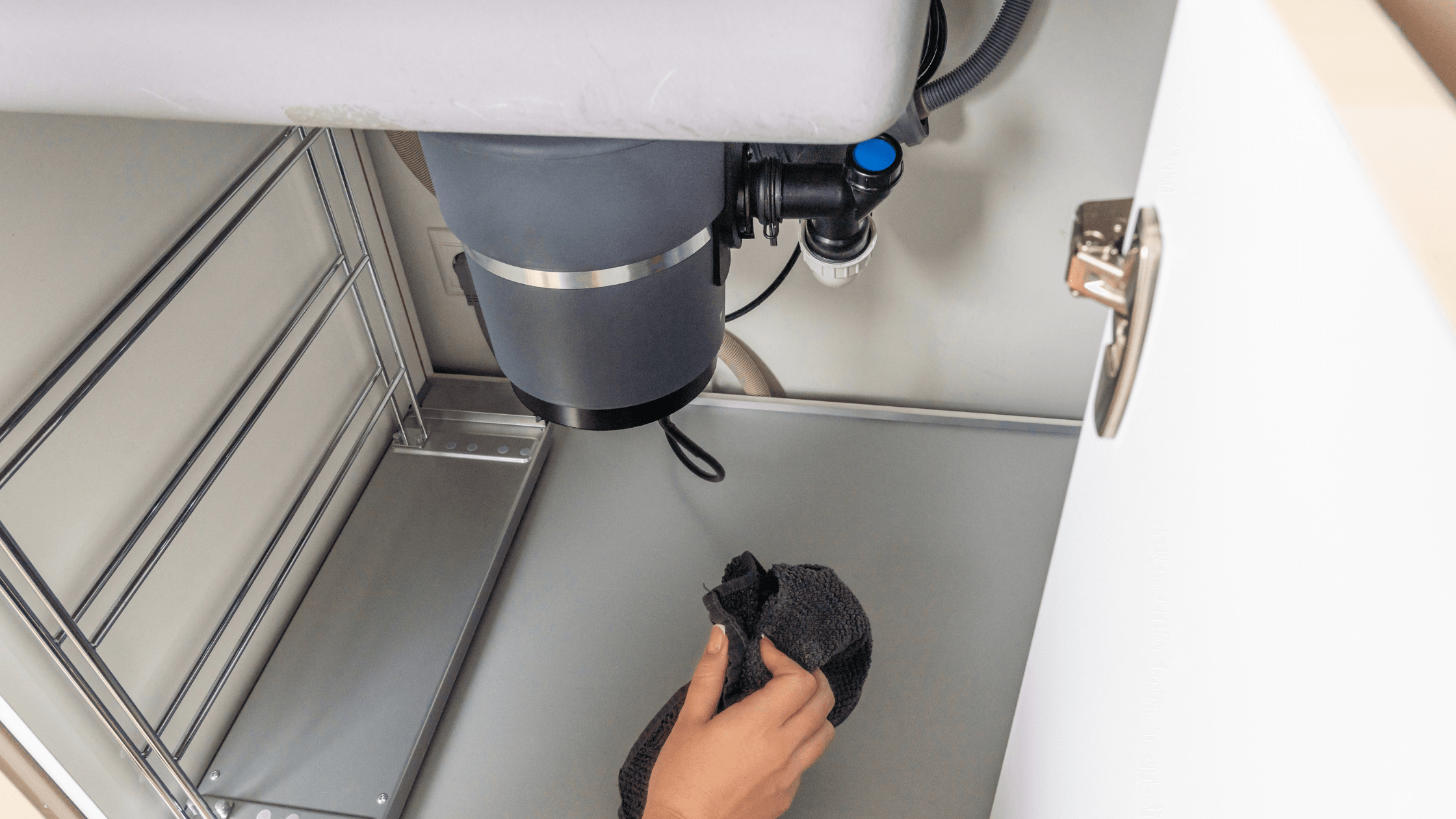Quick Steps to Stop a Leak in Your Garbage Disposal
Quick Steps to Stop a Leak in Your Garbage Disposal
Blog Article
How do you feel in regards to Why Is ?

Garbage disposals are essential kitchen area appliances that help in taking care of food waste effectively. Nonetheless, a dripping waste disposal unit can be an irritating and messy issue to take care of. Fortunately, several leaks can be taken care of quickly with a few easy steps. In this post, we will discuss just how to fix a dripping garbage disposal efficiently.
Introduction
Waste disposal unit are installed under kitchen area sinks and are made to shred food waste into smaller items, enabling it to pass through the plumbing system easily. While these devices are normally reliable, leakages can take place with time because of deterioration, loosened links, or damages to the device.
Typical Root Causes Of Leakages in Rubbish Disposals
Worn Seals and Gaskets
Seals and gaskets play a crucial role in avoiding water from leaking out of the garbage disposal. In time, these components can weaken, leading to leakages around the disposal unit.
Loose Links
The connections between the garbage disposal and the plumbing system can become loose in time, creating water to leakage out throughout procedure.
Fractures or Holes in the Disposal System
Physical damages to the garbage disposal, such as cracks or holes in the housing, can additionally cause leaks.
Recognizing the Source of the Leakage
Before trying to repair a dripping waste disposal unit, it is vital to recognize the resource of the leak. This can generally be done through aesthetic evaluation or by performing basic tests.
Visual Assessment
Evaluate the waste disposal unit system carefully for any type of indications of water leak. Pay very close attention to locations around seals, gaskets, and connection factors.
Evaluating for Leakages
One way to evaluate for leakages is by running water via the disposal device and checking for any kind of noticeable indicators of leak.
Devices and Materials Needed for Fixing a Leaking Garbage Disposal
Prior to starting the fixing procedure, collect the necessary devices and products, including a screwdriver, flexible wrench, plumbing's putty, replacement seals or gaskets, and epoxy or patching material for fixing cracks or holes.
Step-by-Step Guide to Repairing a Dripping Waste Disposal Unit
Switch off the Power
Prior to attempting any type of repairs, make certain that the power to the garbage disposal system is switched off to stop the risk of electrical shock.
Find the Leak
Identify the exact area of the leakage and establish the reason.
Tighten up Links
Utilize a wrench to tighten any loose links in between the disposal device and the pipes system.
Change Seals or Gaskets
If the leak is due to worn seals or gaskets, remove the old elements and change them with brand-new ones.
Patching Fractures or Openings
For fractures or openings in the disposal device, usage epoxy or a suitable patching product to seal the broken area.
Checking the Garbage Disposal After Fixing
When the repair work is total, examine the garbage disposal by running water through it to make sure that the leakage has actually been fixed.
Preventive Upkeep Tips to Prevent Future Leakages
To avoid future leaks, it is essential to perform normal maintenance on your waste disposal unit. This includes maintaining it tidy, preventing putting non-food items or difficult items down the disposal, and occasionally checking for leakages or various other concerns.
Conclusion
Finally, taking care of a dripping waste disposal unit is a relatively straightforward process that can be completed with fundamental tools and materials. By following the actions outlined in this write-up and practicing preventative upkeep, you can maintain your garbage disposal in good working condition and stay clear of costly repair services in the future.
What to Do About a Leaking Garbage Disposal
A leaking garbage disposal often goes unnoticed until you confront a sopping cabinet, a foul-smelling puddle, or an audible drip-drip-drip from the unit. The fix can be frustrating, too, because the leak can stem from a number of components in the system. Fortunately, with a little sleuthing, you can zero in on the leak and—depending on the exact location—stop the icky oozing and repair the component that caused it. Worst case scenario, if it turns out that the garbage disposal must be replaced, installing a new one is a reasonable do-it-yourself task for those with basic plumbing skills. Read on to keep the cash you’d otherwise hand over to a pro.
Prepare to find the leak
Prior to testing the garbage disposal for leaks, unplug it at the wall outlet and turn off the power from the breaker box to prevent electrical shock. Then insert a watertight sink stopper into your sink drain and wipe the unit dry with a clean cloth. In any handy container, mix a few drops of food coloring into a few cups of water, and pour the dyed water onto the sink stopper to help you locate the leak.
Investigate the source
the top, where the disposal meets the sink drain the side, where the dishwasher hose or main drain pipe connects to the disposal or the bottom of the unit Inspect each of these locations while gliding a light-colored rag over the unit; the dyed water will readily show on the rag and reveal the location of the leak. If a leak isn’t immediately apparent, remove the sink stopper and pour a few more cups of dyed water down the sink drain, then check for leaks again. Leaks near the top of the unit are more likely to show themselves while the sink is plugged, while side and bottom leaks are more noticeable while the sink is unplugged.
The metal sink flange that sits directly inside the sink drain is typically sealed around the top with plumber’s putty (a clay-like sealant) and then secured from under the sink with bolts. If the plumber’s putty deteriorates, or the bolts loosen, the flange can no longer form a watertight seal between the sink drain and the disposal—which could cause a leak at the top of the unit.
To reseal the leaky flange, you must first detach the garbage disposal. Start by loosening the screws securing the main drain pipe to the disposal, then loosen the screws in the metal clamp securing the dishwasher hose to the disposal and detach the drain pipe and dishwasher hose from the disposal. Loosen the screws in the mounting ring that connects the disposal to the metal mounting assembly beneath the sink, then pull down the disposal and carefully set it on a clean, dry surface. Loosen the bolts in the mounting assembly with a wrench, then pull down the mounting assembly and set it near the disposal.

We were introduced to that article on Garbage Disposal Leaking From Bottom from someone on a different web page. Are you aware of another individual who is enthusiastic about the niche? Why not promote it. Many thanks for your time. Come back soon.
Schedule Estimate Report this page